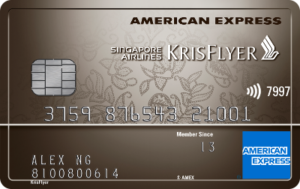Singapore Airlines has received approval from the CAAS to carry transit passengers through Changi Airport once more.
This will take effect from 11 June 2020, for passengers traveling from selected cities in Australia and New Zealand to any destination in the SIA Group network.
Background

Back in May, the CAAS announced that airlines would be allowed to carry transit passengers through Changi Airport once again with effect from 2 June 2020, reversing a ban put in place in March.
Before they could do so, however, they needed to submit proposals for transfer lanes, which the CAAS would evaluate based on aviation safety and public health considerations, as well as the health of passengers and air crew.
It’s been more than a week since the ban was lifted, but Singapore Airlines has now received approval to resume transit flights from 11 June 2020 onwards.
Which cities can Singapore Airlines passengers transit from?
Passengers will be able to travel from selected cities to any destination in the SIA Group network operated by Singapore Airlines, SilkAir, or Scoot. At the moment, transfers to flights operated by other airlines are not permitted.
| Country | City | Served By |
| Australia | Adelaide | Singapore Airlines |
| Brisbane | Singapore Airlines | |
| Melbourne | Singapore Airlines | |
| Perth | Scoot | |
| Sydney | Singapore Airlines | |
| China | Chongqing | SilkAir |
| Guangzhou | Scoot | |
| Hong Kong | Singapore Airlines & Scoot | |
| Shanghai | Singapore Airlines | |
| Japan | Osaka | Singapore Airlines |
| Tokyo | Singapore Airlines | |
| New Zealand | Auckland | Singapore Airlines |
| Christchurch | Singapore Airlines | |
| South Korea | Seoul | Singapore Airlines |
Do note that transit flights are only for outbound journeys from these selected cities; passengers will not be able to transit from any other points in the SIA Group network through Singapore into these cities.
From Singapore, transit passengers will be able to connect to the following destinations:
For more information on the destinations served by Singapore Airlines and Scoot in June and July, do refer to the linked articles.
Passengers are responsible for ensuring they meet the entry requirements for their final destination.
What will the transit experience at Changi be like?

In a word? Sterile.
Changi Airport and Singapore Airlines desperately need transit passengers, but there’s also an equally pressing need for biosecurity. The plan therefore is to keep transit and non-transit passengers apart throughout the journey, and to minimize contact between airport staff and passengers.
On departure
The process starts before passengers have even stepped foot in Changi. Passengers will be screened for any signs of illness and asked to make a health declaration.
Those transiting in Singapore will be the first group to board the aircraft (regardless of cabin class). They will be assigned seating in a designated zone, which they must stay in throughout the flight.
During transit in Changi

On arrival at Changi, transit customers will disembark last, after passengers for whom Singapore is the final destination. All arriving passengers will be temperature screened, and transit passengers will receive a wristband which grants them access to the designated transit holding area.
If transit time is less than 75 minutes, customers will be ushered directly to the boarding gate. For transits longer than 75 minutes, customers will be ushered to a designated transit holding area before boarding.
Changi has designated two separate transit holding areas:
- Terminal 1’s will be at Gates C1 to C3
- Terminal 3’s will be outside Gate A15
Customers will not be able to make any stops along the way, and will have to stay in the transit holding area at all times. This area will have food kiosks, vending machines, restrooms, a smoking room and a snooze corner, with complimentary Wi-Fi. Passengers with young children will be relieved to know there’s an entertainment one with game machines at the Terminal 3 holding area.

Changi will allow transit passengers to make duty-free purchases using the airport’s shopping concierge service. Products offered include those sold by Shilla Cosmetics and Perfumes, Lotte, and Gift by Changi Airport. These will be delivered directly to the holding area. There will also be an option to order food from outlets in Changi Airport.

PPS Club members, Suites, First, and Business Class passengers will not be able to access the SilverKris Lounge in Changi Airport due to regulatory requirements. They will instead be invited to a “premium waiting area” in the transit holding area, where complimentary food and beverages will be provided.

There’s no mention of any access for KrisFlyer Elite Gold or Star Gold members traveling in Economy Class, so I think it’s best to not expect any love.
For passengers with a longer layover, the Aerotel hotel in Changi Terminal 1 is now open for bookings, with a minimum stay of 1 hour. Transit passengers who have made bookings should inform the Changi Experience Ambassador on duty for assistance, who will escort them to the hotel.
Departing from Changi
When the time comes to board, transit passengers will be ushered in groups from the transit holding area directly to the boarding gate, and board the aircraft first.
Once again, transit passengers will be seated separately from non-transit passengers, and upon arrival, non-transit passengers will disembark first, followed by transit passengers.
Conclusion
The lifting of the transit passenger ban can only be good news for Singapore Airlines, which is all the more reliant on them now that there’s a de facto travel ban for Singaporeans.
It will also generate some much-needed economic activity for Changi Airport, which has seen passenger volumes fall off a cliff due to Covid-19.
| Passenger Movements (in ‘000s) | ||
| 2019 | 2020 | |
| January | 5,660 | 5,950 |
| February | 5,130 | 3,450 |
| March | 5,630 | 1,650 |
| April | 5,580 | 25.2 |
| Source: Changi Airport Group | ||
The transit process isn’t going to be anything like the heralded Changi Airport experience with movie theaters, butterfly gardens, swimming pools and lounges, but that’s just the way it is for now.
More information on the transit experience through Changi for Singapore Airlines passengers can be found here.







